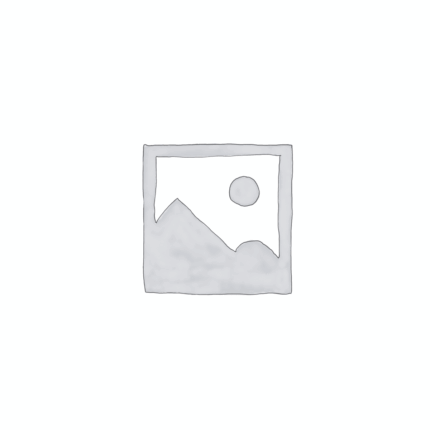Ammonium bicarbonate
Whatsapp Order
Ammonium bicarbonate is a white crystalline powder or granules with a slightly alkaline taste and a characteristic ammoniacal odor. It is a white solid that decomposes readily on heating, releasing ammonia, carbon dioxide, and water vapor. It is widely used in the food industry as a leavening agent, in chemical synthesis, and in various industrial applications. Its unique property of decomposing to release gases makes it valuable for baking and other processes where gas release is desired.
Description
Ammonium bicarbonate Uses
Primary Uses
Food Industry – Leavening Agent
- Commonly used as a leavening agent in baked goods such as cookies, crackers, and flatbreads where it helps produce a light, porous texture by releasing CO₂ gas upon heating.
- Preferred in recipes that require a quick release of gas without leaving residue, especially in traditional and artisanal baking.
- Used in some bakery products as an alternative to baking powder or baking soda.
- Approved as a food additive (E503ii) in many countries.
Chemical Industry – Reagent & Intermediate
- Utilized as a mild alkaline reagent in chemical synthesis and analytical chemistry.
- Acts as a source of ammonia and carbon dioxide in chemical reactions.
- Employed in the production of pharmaceuticals, fertilizers, and dyes.
Pharmaceuticals
- Used as a component in some effervescent powders and preparations, where the gas release aids dissolution and absorption.
- May act as a mild antacid in certain formulations.
Secondary Uses
Agriculture
- Occasionally used as a nitrogen fertilizer or soil amendment, providing ammonium ions and helping adjust soil pH.
- Less commonly applied compared to ammonium sulfate or nitrate.
Fire Extinguishing
- Used in some dry chemical fire extinguishers as a chemical that decomposes to release non-flammable gases.
Laboratory Uses
- Employed in analytical chemistry as a buffering agent or source of ammonium ions.
- Used in preparing volatile buffers for mass spectrometry and chromatography.
KEY ATTRIBUTES
1. Basic Identification Attributes
- Chemical Name (IUPAC): Ammonium bicarbonate
- Common/Trade Names: Ammonium bicarbonate, ammonium hydrogen carbonate
- CAS Number: 1066-33-7
- HS Code: 2836.20.00
- Molecular Formula: NH4HCO3
- Synonyms: Ammonium hydrogen carbonate, ammonium acid carbonate
2. Physical & Chemical Properties
- Physical State: White crystalline powder or granules
- Color & Odor: White, odor of ammonia when decomposing
- Melting Point: Decomposes at ~36–60°C (not a true melting point)
- Boiling Point: Decomposes before boiling
- Density: ~1.6 g/cm³
- Solubility: Highly soluble in water (~3.7 g/mL at 20°C), decomposes in hot water
- pH Level: Slightly alkaline (~8–9 in aqueous solution)
- Vapor Pressure: Low, but releases ammonia and CO₂ upon decomposition
- Flash Point: Non-flammable
- Stability: Unstable when heated or in moist environments
3. Safety & Hazard Attributes
- Hazard Class (GHS): Generally low hazard, but ammonia release can cause irritation
- NFPA Ratings: Health 2 (moderate hazard), Flammability 0, Reactivity 1 (unstable)
- Exposure Limits: No specific OSHA PEL, ammonia vapors exposure limits apply
- Reactivity: Decomposes readily on heating or in moist air
- Incompatible Materials: Strong acids, strong bases, oxidizing agents, moisture
4. Storage & Handling Attributes
- Storage Conditions: Store in a cool, dry place in airtight containers to prevent decomposition
- Container Type: Plastic or glass containers, tightly sealed
- Shelf Life: Typically 1–2 years if stored properly in dry conditions
- Special Handling: Avoid moisture and heat; handle in well-ventilated areas to avoid ammonia vapor buildup
5. Regulatory & Compliance Attributes
- Regulatory Status: Approved food additive (E503ii) in many regions
- Transportation: Not classified as hazardous but requires careful packaging to avoid moisture exposure
- Waste Disposal: Dispose according to local regulations; non-hazardous but avoid environmental contamination
6. Environmental & Health Impact
- Ecotoxicity: Low aquatic toxicity, but ammonia release can be harmful in large quantities
- Persistence: Decomposes readily in the environment
- Carcinogenicity: Not classified as carcinogenic
- Biodegradability: Biodegradable and breaks down into natural components
SAFETY HANDLING PRECAUTIONS
Safety Handling Precautions
- PPE: Wear gloves, safety goggles, and dust masks when handling the powder.
- Handling: Avoid inhalation of dust and ammonia vapors. Work in well-ventilated areas.
- Storage: Keep containers sealed and dry to prevent decomposition and ammonia release.
- Hygiene: Wash hands after use; avoid eating, drinking, or smoking during handling.
First Aid Measures
- Inhalation: Move affected person to fresh air immediately. If ammonia vapors cause irritation or breathing difficulty, seek medical attention.
- Skin Contact: Wash skin with soap and water. Seek medical advice if irritation develops.
- Eye Contact: Rinse eyes with plenty of water for at least 15 minutes. Seek medical care if irritation persists.
- Ingestion: Rinse mouth and drink plenty of water. Seek medical attention if large amounts are ingested.
Firefighting Measures
- Fire Hazards: Non-flammable but decomposes on heating releasing ammonia and carbon dioxide gases, which can be irritating.
- Extinguishing Media: Use water spray, dry chemical, foam, or CO₂ for surrounding fires.
- Special Precautions: Firefighters should use self-contained breathing apparatus (SCBA) due to ammonia vapors.
Related products
Acetic Acid Technical Grade
Acetic acid technical grade is a clear, corrosive liquid with a strong, sharp odor. It is primarily used in industrial and chemical applications rather than food or pharmaceutical products. With the chemical formula CH₃COOH, technical-grade acetic acid typically has a purity of around 99%, but it may contain small amounts of impurities that make it unsuitable for consumption or high-purity applications.
Acetone
Aluminium Silicate
Aluminium silicate is an inorganic compound composed of aluminum, silicon, and oxygen, often found naturally as a major component of clay minerals such as kaolinite, halloysite, and other aluminosilicates. It is a white to off-white powder with excellent thermal stability, chemical inertness, and physical durability. Due to its wide range of physicochemical properties—including high melting point, non-toxicity, and adsorptive capabilities—aluminium silicate is extensively used across diverse industries including ceramics, paints, paper, rubber, plastics, cosmetics, and pharmaceuticals. Its unique structure imparts benefits such as heat resistance, improved mechanical strength, and anti-caking properties, making it a vital raw material in both industrial and consumer products.
Ammonium Acetate
Ammonium acetate is a white crystalline solid or granular powder that is highly soluble in water. It is the ammonium salt of acetic acid and commonly appears as a colorless, odorless compound. Ammonium acetate is widely used in laboratories, chemical synthesis, food industry, pharmaceuticals, and industrial applications due to its buffering capacity and ability to provide both ammonium and acetate ions in solution. It functions as a neutral salt and is valued for its role as a pH buffer, reagent, and stabilizer.
Ascorbic acid
Ascorbic Acid, commonly known as Vitamin C, is a water-soluble vitamin and potent antioxidant essential for collagen synthesis, immune function, and protection against oxidative stress. It is widely used as a nutritional supplement, food preservative, and additive to enhance shelf life and nutritional value. Naturally present in citrus fruits and various vegetables, ascorbic acid is also important in pharmaceutical, cosmetic, and animal feed industries due to its health benefits and preservative qualities.
Betamethasone 17 Valerate BP
Betamethasone 17 Valerate BP is a potent synthetic corticosteroid ester used primarily for its anti-inflammatory, antipruritic, and vasoconstrictive properties. It is commonly applied topically to treat a variety of skin conditions such as eczema, psoriasis, dermatitis, and allergic reactions. The valerate ester enhances the lipophilicity and skin penetration of betamethasone, improving its therapeutic efficacy. It is recognized in the British Pharmacopoeia (BP) for pharmaceutical standards and quality.
Bismuth subgallate
Bismuth Subgallate is a pale yellow, odorless, tasteless powder composed of bismuth and gallic acid derivatives. It is widely used as an internal deodorant for controlling odor from flatulence and stool, especially in patients with gastrointestinal conditions or post-surgery stomas. It also serves as a mild astringent and has hemostatic properties, making it useful in wound care products. Due to its insolubility in water and stability, it is suited for oral and topical formulations.
Bromelain
Bromelain is a natural mixture of proteolytic enzymes derived primarily from the stem and fruit of the pineapple plant (Ananas comosus). It appears as a pale yellow to off-white powder with a characteristic mild odor and is water-soluble. Bromelain exhibits protease activity, breaking down proteins into peptides and amino acids, making it valuable in medical, food, and industrial applications. It is widely used as an anti-inflammatory agent, digestive aid, meat tenderizer, and in cosmetic formulations due to its enzymatic and therapeutic properties.


 Pesticides (Herbicides, Insecticides, Fungicides)
Pesticides (Herbicides, Insecticides, Fungicides) Animal Feed Additives
Animal Feed Additives Biostimulants
Biostimulants Plant Growth Regulators
Plant Growth Regulators Fertilizers
Fertilizers Soil Conditioners
Soil Conditioners
 Decoratives
Decoratives Dough Conditioners
Dough Conditioners Fat Replacers
Fat Replacers Flour Treatments
Flour Treatments Leavening Agents
Leavening Agents Preservatives(baking)
Preservatives(baking)
 Bleaching Agents
Bleaching Agents Builders
Builders Enzymes
Enzymes Fragrances
Fragrances Surfactants(cleaning)
Surfactants(cleaning) Solvents (cleaning)
Solvents (cleaning)
 Admixtures
Admixtures Anti-Corrosion Coatings
Anti-Corrosion Coatings Concrete Repair Chemicals
Concrete Repair Chemicals Curing Compounds
Curing Compounds Sealants and Adhesives
Sealants and Adhesives Waterproofing Agents
Waterproofing Agents
 Antioxidants(cosmetic)
Antioxidants(cosmetic) Emollients
Emollients Fragrances and Essential Oils
Fragrances and Essential Oils Humectants
Humectants Surfactants(cosmetic)
Surfactants(cosmetic) Thickeners
Thickeners UV Filters
UV Filters Preservatives (cosmetic)
Preservatives (cosmetic)
 Bio-based Solvents
Bio-based Solvents Biodegradable Surfactants
Biodegradable Surfactants Carbon Capture Chemicals
Carbon Capture Chemicals Renewable Polymers
Renewable Polymers Wastewater Treatment Chemicals
Wastewater Treatment Chemicals
 Acidulants
Acidulants Antioxidants
Antioxidants Colorants(food)
Colorants(food) Emulsifiers
Emulsifiers Flavor Enhancers
Flavor Enhancers Nutraceutical Ingredients (food)
Nutraceutical Ingredients (food) Nutrient Supplements
Nutrient Supplements Preservatives(food)
Preservatives(food) Sweeteners
Sweeteners
 Dried Herbs
Dried Herbs Fresh Herbs
Fresh Herbs Ground Spices
Ground Spices Spice Blends
Spice Blends Whole Spices
Whole Spices
 Analytical Reagents
Analytical Reagents Biochemical Reagents
Biochemical Reagents Chromatography Chemicals
Chromatography Chemicals Inorganic and Organic Standards
Inorganic and Organic Standards Laboratory Safety Chemicals
Laboratory Safety Chemicals Microbiology and Cell Culture Reagents
Microbiology and Cell Culture Reagents Molecular Biology Reagents
Molecular Biology Reagents Solvents(lab)
Solvents(lab) Specialty Laboratory Chemicals
Specialty Laboratory Chemicals Spectroscopy Reagents
Spectroscopy Reagents
 Collectors
Collectors Dust Suppressants
Dust Suppressants Explosives and Blasting Agents
Explosives and Blasting Agents Flocculants and Coagulants
Flocculants and Coagulants Frothers
Frothers Leaching Agents
Leaching Agents PH Modifiers
PH Modifiers Precious Metal Extraction Agents
Precious Metal Extraction Agents
 Catalysts
Catalysts Corrosion Inhibitors
Corrosion Inhibitors Demulsifiers
Demulsifiers Drilling Fluids
Drilling Fluids Hydraulic Fracturing Fluids
Hydraulic Fracturing Fluids Scale Inhibitors(oil)
Scale Inhibitors(oil) Surfactants(oil)
Surfactants(oil)
 Active Pharmaceutical Ingredients (APIs)
Active Pharmaceutical Ingredients (APIs) Analgesics and Antipyretics
Analgesics and Antipyretics Antibiotics
Antibiotics Antiseptics and Disinfectants
Antiseptics and Disinfectants Excipients
Excipients Nutraceutical Ingredients (Pharmaceutical)
Nutraceutical Ingredients (Pharmaceutical) Solvents(pharmaceutical)
Solvents(pharmaceutical) Vaccine Adjuvants
Vaccine Adjuvants
 Antioxidants(plastic)
Antioxidants(plastic) Colorants (Pigments, Dyes)
Colorants (Pigments, Dyes) Fillers and Reinforcements
Fillers and Reinforcements Flame Retardants
Flame Retardants Monomers
Monomers Plasticizers
Plasticizers Polymerization Initiators
Polymerization Initiators Stabilizers (UV, Heat)
Stabilizers (UV, Heat)
 Accelerators and Retarders
Accelerators and Retarders Adhesion Promoters
Adhesion Promoters Antidegradants (Antioxidants, Antiozonants)
Antidegradants (Antioxidants, Antiozonants) Blowing Agents (for foam rubber)
Blowing Agents (for foam rubber) Plasticizers and Softeners
Plasticizers and Softeners Reinforcing Agents (Carbon Black, Silica)
Reinforcing Agents (Carbon Black, Silica) Vulcanizing Agents (e.g., Sulfur, Peroxides)
Vulcanizing Agents (e.g., Sulfur, Peroxides)
 Analytical Reagents
Analytical Reagents Automotive chemicals
Automotive chemicals Electronic Chemicals
Electronic Chemicals Lubricants
Lubricants Photographic Chemicals
Photographic Chemicals Pyrotechnic Chemicals
Pyrotechnic Chemicals Refrigerants
Refrigerants Sealants and Adhesives
Sealants and Adhesives
 Antistatic Agents
Antistatic Agents Bleaching Agents
Bleaching Agents Dyes and Pigments
Dyes and Pigments Finishing Agents
Finishing Agents Flame Retardants
Flame Retardants Softening Agents
Softening Agents
 Antifoaming Agents
Antifoaming Agents Chelating Agents
Chelating Agents Coagulants and Flocculants
Coagulants and Flocculants Corrosion Inhibitors
Corrosion Inhibitors Disinfectants and Biocides
Disinfectants and Biocides Oxidizing Agents
Oxidizing Agents pH Adjusters (water)
pH Adjusters (water) Scale Inhibitors( water)
Scale Inhibitors( water)















